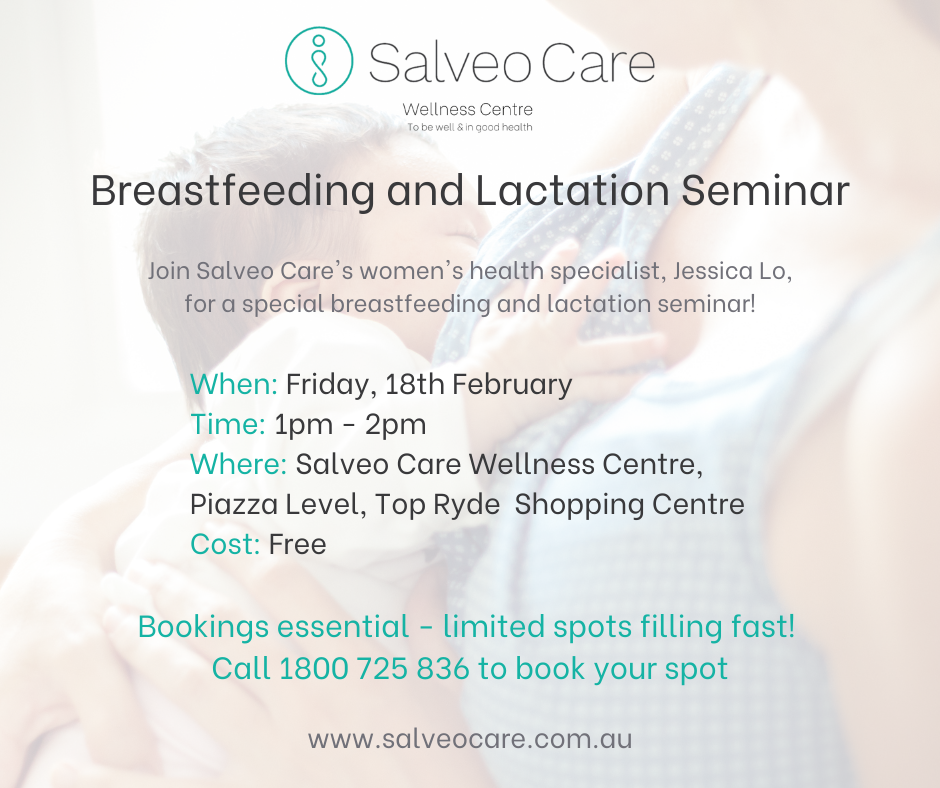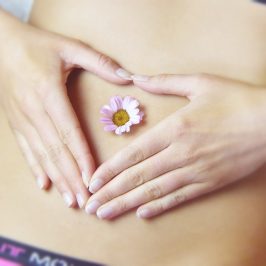by Salveo Care Wellness Centre Top Ryde
Breastfeeding is universally acknowledged as the first step in the promotion of health and wellbeing of children and their families. The benefits of breastfeeding to both the infant and the mother have been widely recognized (WHO, 2001). The World Health Organization (WHO) has asserted that babies should be exclusively breastfed for at least the first 6 months. Breastfeeding is ultimately a much different experience for every mother. It can even be a different experience between children for the same mother! Some women may have incredible experiences with breastfeeding, while others may have less than pleasant experiences. Working alongside our experienced professionals can help to provide a far more positive breastfeeding experience, which will help to keep your baby happy and healthy.
Basics of Breastfeeding
There are multiple stages during the first few weeks of breastfeeding. During the first stage, your body produces a milk that is called colostrum. This stage generally lasts for the first few days after birth. Colostrum exhibits a yellow or orange tint. The substance is filled with essential nutrients and is rather thick and rich. Around the 3rd or 4th day after giving birth, the amount of milk produced will likely increase. Breasts become swollen, hard, throbbing, aching, tender and painful. This is the period at which the milk changes from colostrum to transitional milk, which is ultimately a combination of colostrum and mature milk to help the baby transition. Around approximately 10 days to 2 weeks after birth, the transitional milk will change to mature milk, which will last throughout the rest of your breastfeeding process.
It is usually best to start breastfeeding as soon as possible after giving birth. You will be encouraged to begin breastfeeding within an hour of giving birth. Babies tend to be rather alert for the first two hours after birth, which makes it an ideal time to begin breastfeeding.
And, it is important to get guidance regarding how to get your baby to latch appropriately. With a good latch, the baby will be able to more efficiently remove breast milk and get adequate levels of nutrition. When the baby has a poor latch, it will often result in them not getting enough milk. In addition, the milk supply won’t adjust according to your baby’s needs. A poor latch also tends to result in soreness and pain to the breasts. In severe cases, may be due to a consequence of mismanagement, milk stasis may occur and leading to blocked duct(s).

Blocked Milk Duct vs Mastitis
What is a blocked duct?
A blocked duct is an area or segment of the breast where milk flow is obstructed (milk stasis) causing a tender lump or spot in the breast. More than two-thirds of breastfeeding mothers experienced blocked ducts.
What is mastitis?
Mastitis is an inflammation of the breast which is usually caused by a blocked milk duct that hasn’t cleared, or a damaged nipple. Infection may or may not be present.
Symptoms
|
Blocked duct |
Mastitis |
|
| Local symptoms |
|
|
| Systemic symptoms |
|
|
It’s important to start treatment as soon as you feel a lump or sore spot on your breast. Blocked ducts or mastitis could make the lactation painful and difficult, it also causes anxiety and frustration to both mother and baby. If the mother chooses to discontinue breastfeeding at this stage, which may further exacerbate the problem.
Treatment
- The most important part of treatment is frequent milk removal by breastfeeding or expressing (eight or more times each 24hrs)
- Milk supply from the affected breast may decrease temporarily. This is normal – extra feeding or expressing will return your milk supply to normal.
- You may express strings of thickened or fatty looking milk.
- After the mastitis has resolved, it is common for the affected area to feel bruised or remain reddened for a week or so afterwards.
- Apply ice pack instead of hot pack for pain relief
- Your breast milk may taste salty due to increased sodium and chloride content. If your baby is breastfeeding, they may fuss due to this change in taste. If your baby is being fed by a naso-gastric tube they will not notice any difference.
- Therapeutic ultrasound delivered by a physiotherapist can reduce the pain, swelling and inflammation of the breast, milk expression is usually earlier after therapeutic ultrasound therapy.
You should not try weaning if you have a blocked duct or are suffering mastitis. You must continue to remove milk from your breasts at this time in order to reduce the risk a breast abscess. If the problem can be handled earlier, antibiotics usually can be avoided.
Therapeutic Ultrasound
Therapeutic ultrasound is a form of mechanical energy with high frequency sound waves that are used to stimulate body tissue. Sound waves consist of area of alternating compression and rarefaction, which when body tissue is exposed to a sound wave, it will oscillate about a fixed point causing micro vibration within tissue. Therefore, an increase vibration in body tissue can result in the increase in blood flow to treatment area to promote healing, the reduction in pain and swelling, and also, the effect of micro massage on soft tissue. As therapeutic ultrasound is a non-invasive treatment, so no side effect to mothers and babies. Several studies have demonstrated the benefits of using therapeutic ultrasound on blocked duct in lactating mothers with the reduction of their presenting symptoms (pain reduced more than 40% after treatment) and improvement in breastfeeding.
Physiotherapy
Consult your Lactation Consultant or specialised Lactation Physiotherapist for your breastfeeding problem, early invention can ease your frustration and enjoy the bonding and satisfaction in breastfeeding your beloved babies.
Salveo Care Wellness Clinic
Located in Top Ryde, Salveo Care Wellness Clinic Resident Women’s Health physiotherapist, Jessica Lo, specialises in the treatment of mastitis and blocked ducts and can provide lactation support to new mums.
To learn more or to make an appointment, visit www.salveocare.com.au or call 1800 725 836
Breastfeeding and Lactation Seminar
Join Salveo Care’s women’s health specialist, Jessica Lo, for a special breastfeeding and lactation seminar at Salveo Care Wellness Centre! For more information or to book a spot, call 1800 725 836.

Salveo Care Home Visits
Salveo Care offers home visits with NO extra call-out fee. There is a single fee of $120 and they provide this service within 15km from Top Ryde. You can also use your private health care to further reduce this cost or GP approved plans.
Free first assessment
- No gap/FREE first assessment and appointment
- Complimentary coffee voucher after a visit
- $4 discount for Bahn Mi at Top Ryde Bakehouse (rated best Bahn Mi in Sydney!)

NDIS
Salveo Care is NDIS registered and assists both agency-managed participants as well as participants who self-manage their plan or manage their plan with plan management services.














